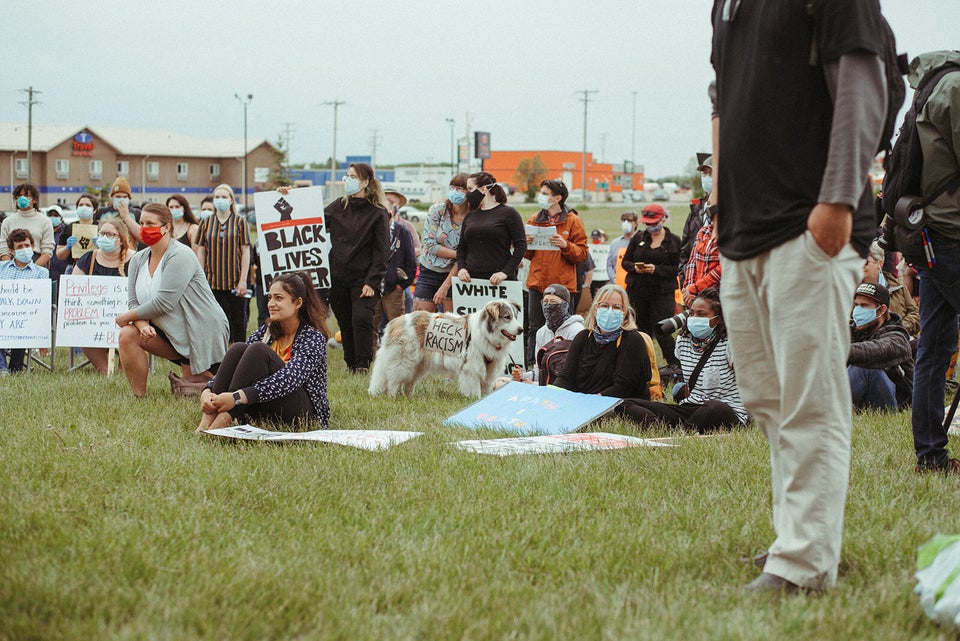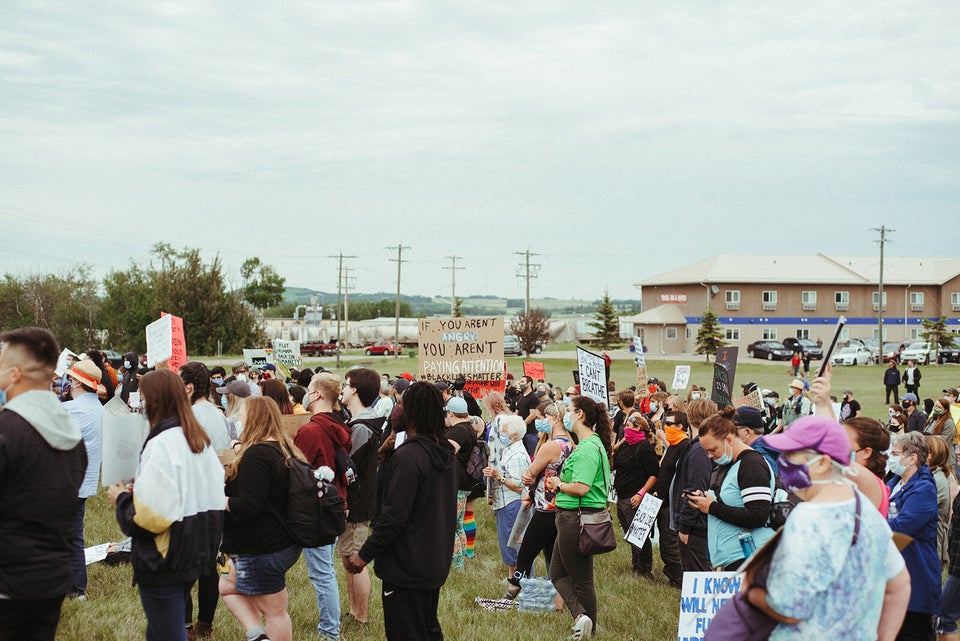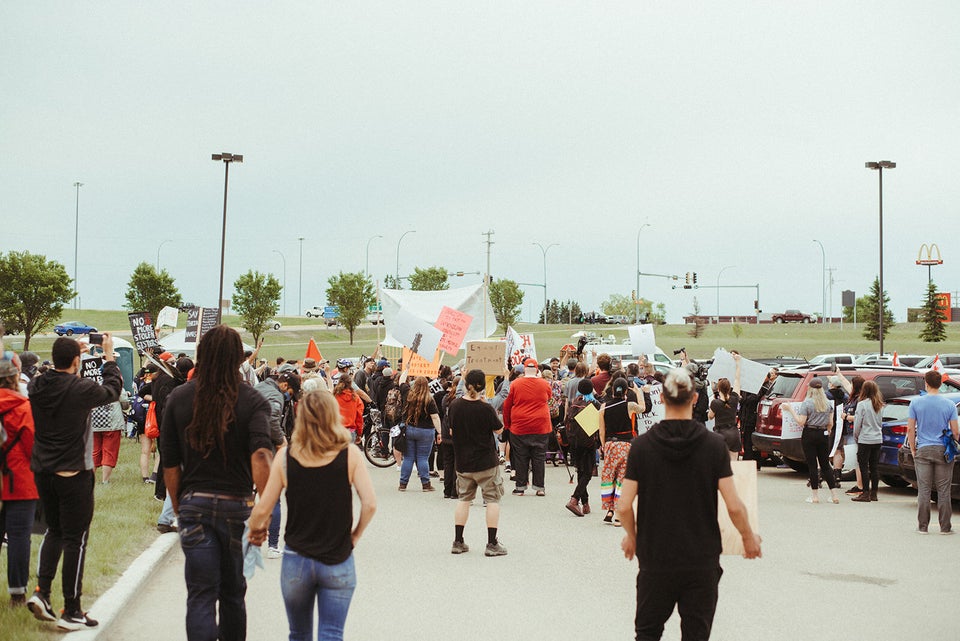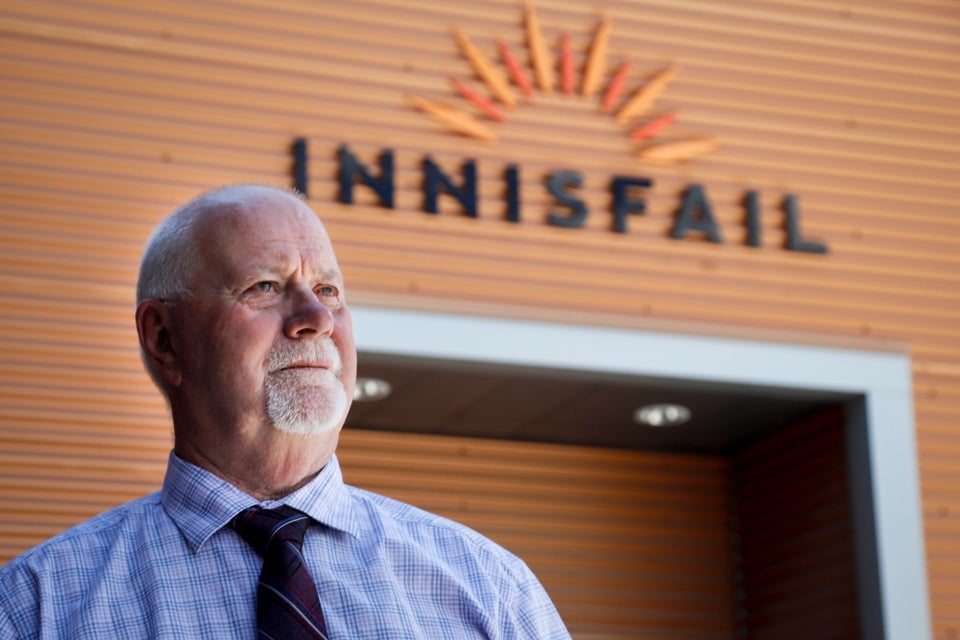Systemic Racism Exists In Canada. It’s A Fact, Not An Opinion
There are two crises in front of us: COVID-19 and the emergence of systemic racism deniers.
By Zi-Ann Lum
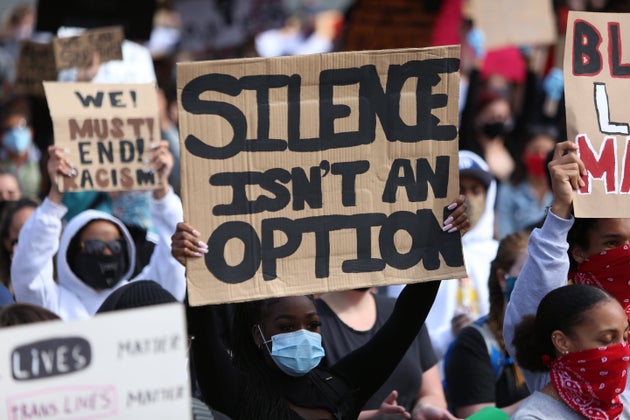
MERT ALPER DERVIS/ANADOLU AGENCY VIA GETTY IMAGES
Thousands attend a protest against racism at the Olympic Cauldron at Jack Poole Plaza on June 5, 2020 in Vancouver.
It felt like there was a wild glitch in the universe this week when Quebec Premier François Legault, Bloc Québécois Leader Yves-François Blanchet, Ontario Premier Doug Ford and now-former CBC commentator Stockwell Day either sidestepped questions or denied that systemic racism exists in Canada.
Ford and Blanchet both responded to the subject this week with initial vague comments that were later clarified. “Of course there’s systemic racism in Ontario, there’s systemic racism across this country,” Ford said. Blanchet, in turn, referenced the government’s treatment of First Nations people as an example that “it does exist.”
Legault expressed solidarity with thousands of protesters in Montreal who marched against police brutality last weekend following the killing of George Floyd, a Black man who died in Minneapolis last week after a white officer knelt on his neck during an arrest. Looking at our country, the Quebec premier downplayed the problem of racism. There’s “some discrimination,” he said. “There’s no systemic discrimination.”
Systemic racism and discrimination exists. It’s a fact, not an opinion. And it’s certainly not up to white men in positions of power to arbitrate whether or not it does.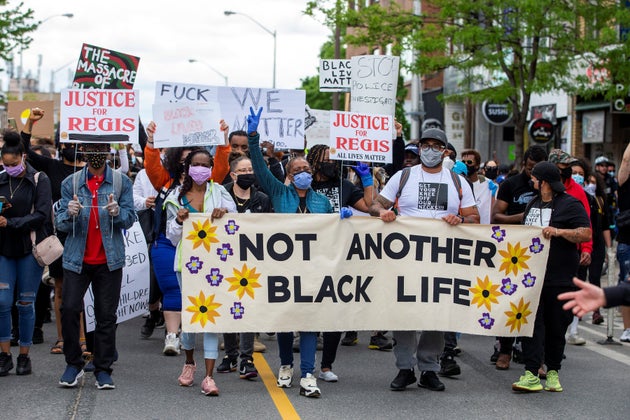
CARLOS OSORIO / REUTERS
Friends and family of Regis Korchinski-Paquet lead protesters as they march on May 30, 2020 to protest the deaths in the U.S. of Ahmaud Arbery, Breonna Taylor and George Floyd, and of Toronto's Regis Korchinski-Paquet, who died after falling from an apartment building while police officers were present.
It’s everywhere. Systemic racism is entrenched in our health-care and immigration systems. It manifests in practices and policies that exclude or promote members of a particular group. And it’s been well-documented: Countless reports have been released documenting unique barriers Black and Indigenous people face in accessing health care.
Coronavirus outbreaks have torn through long-term care homes in this country partly due to interconnected problems flagged years earlier. At the time of writing, COVID-19 has been linked to 7,700 deaths in Canada; 64 per cent in Quebec. The pandemic has exposed significant gaps in existing practices and policies that have put Black communities at increased risk of COVID-19 infections.
Denying racism exists won’t give you the full picture of what’s behind these tragedies.
Canada’s history of undervaluing and underpaying care workers, a workforce over-represented by racialized and immigrant women, has exacerbated the impact of coronavirus outbreaks in care homes. Temporary foreign workers tied to one employer for a “specific, short-term labour need” may face unsafe conditions, but risk deportation by quitting. Workers facing this Catch-22 situation filled the High River, Alta. meat-processing plant that became the site of one of North America’s largest coronavirus outbreaks, with more than 1,500 documented cases.
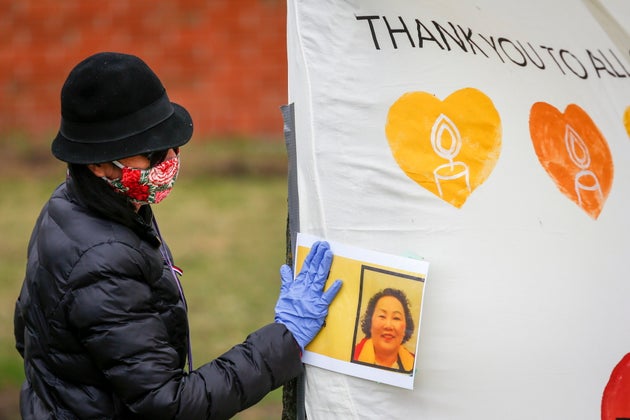
JEFF MCINTOSH/CP
A mourner touches a photo at a memorial of Hiep Bui Nguyen, a Cargill worker who died from COVID-19, in Calgary, Alta. on May 4, 2020.
When someone denies racism exists in Canada, it signals that this person has, at most, a very partial understanding of how systemic barriers are embedded in our everyday lives. It’s alarming when these words come from the mouths of political party leaders.
Systemic racism is baked into the foundations of our justice and media systems. Is recognizing systemic racism a politically volatile subject? Maybe if you exclusively read the white-dominated opinion pages of the country’s broadsheets. We can all certainly do better in diversifying our newsrooms, particularly in leadership roles.
This week, the National Post ran a column by Rex Murphy giving him free rein to make the backward suggestion it’s only senior members of the Liberal party “who have a clear view of all this racism and discrimination.” His colleague, journalist Vanmala Subramaniam, took him to task the next day for his blind diatribe. She shouldn’t have had to do that. As Subramaniam put it: “Someone who has absolutely no lived experience of racism ... most certainly should not be allowed to declare that racism is over nor be given a national platform to do so.”
We can all certainly do better in diversifying our newsrooms, particularly in leadership roles.
While Murphy was allowed to write his pointless polemic, journalist Desmond Cole has been fighting for years for police to end racial profiling, which has not been unheard of on Parliament Hill. But his byline disappeared from the Toronto Star a few years ago because the newspaper found his advocacy, which he’s described to be in the service of Black liberation, unsavoury. But other reporters were given space to write stories about their own activism.
For Black, Indigenous, and people of colour, it takes an enormous amount of emotional labour to explain the invisible barriers they face. Look at poverty and incarceration rates. The suicide rate among Indigenous people is three times higher than among non-Indigenous groups.
“No one should have to make the case for why their humanity matters,” wrote TVO journalist Nam Kiwanuka recently. “If this conversation makes you uncomfortable, ask yourself why.”
Prime Minister Justin Trudeau said Thursday that Canadians continue to watch the police brutality at anti-police brutality protests in the United States with “horror and consternation.” He said Canada has to look inward and “make sure that the millions of Canadians who face discrimination and intolerance every single day in their lived reality get better support.” He did not elaborate on what help would be offered.
Though their hearts may be in the right place, politicians who reaffirm that racism exists aren’t helping by stating what’s been obvious for people’s entire lifetimes.
Trudeau joined a solidarity march in honour of Floyd on Parliament Hill in Ottawa Friday and took a knee.
Since 2015, the prime minister has repeated variations of the phrase, “diversity is Canada’s strength.” But his party, and the federal Conservatives, both launched Chinese-language ads in Asian grocery stores during the election, playing into anti-Blackness stereotypes that exist within those communities to shore votes.
This week, federal leaders stood in the House of Commons to express their support for the Black community and to denounce racism. “Diversity is the result of our strength and our strength is and always has been our freedom,” said Conservative Opposition Leader Andrew Scheer. But these were not original words written for an unprecedented time. The message has been repeated word-for-word for a year, most recently in a statement about Holi.
These kinds of vague statements fetishize multiculturalism by focusing on optics. They can perpetuate systemic racism by failing to move a national dialogue beyond well-used truisms.
“Non-controversial aspects of culture such as food, clothing, dance and music” are promoted and monetized in tourism campaigns, according to Canadian author Kogila Moodley. The message of multiculturalism isn’t focused on equity or affirmative action.
Though their hearts may be in the right place, politicians who reaffirm that racism exists aren’t helping by stating what’s been obvious for people’s entire lifetimes.
The pandemic and protests have together drawn a big, red circle around the perverse, disproportionate impact systemic racism has on racialized groups. It’s also revealed a dearth of race-based, socioeconomic data that could be compiled to improve access to employment, housing and other essential services. But there are sensitivities to work through, too. Historically, racial data hasn’t always been analyzed with good intentions.
When systemic racism deniers reveal themselves, during a pandemic, it’s insensitive, upsetting and enraging. But addressing blind spots in health care, immigration, justice, media, and political systems isn’t for the faint of heart. There’s a new generation of leaders — Black, Indigenous, and people of colour — growing, learning, and waiting in the wings.
Legault’s approval ratings may be soaring right now, but that oomph doesn’t give him licence to amplify his opinion that systemic racism doesn’t exist. It does. If denying climate change is unacceptable, why is denying systemic racism OK?
There was a moment in April where the Quebec premier confessed the province entered the pandemic “ill equipped.” “I assume full responsibility,” he said. If he were able to redo one thing to better prepare his province for the arrival of the novel coronavirus, Legault said: “I would have increased the wages of orderlies faster, even without the accord of the unions.”
So, he’s watching and listening. And others are, too.
Have a personal story you’d like to share on HuffPost Canada? You can find more information here on how to pitch and contact us.
CLARIFICATION: An earlier version of this column stated Bloc Québécois Leader Yves-François Blanchet denied systemic racism exists in Canada, in reference to vague comments made in a press conference on June 2, 2020. The next day, he offered a clearer response saying “it does exist.” This version has been updated.







